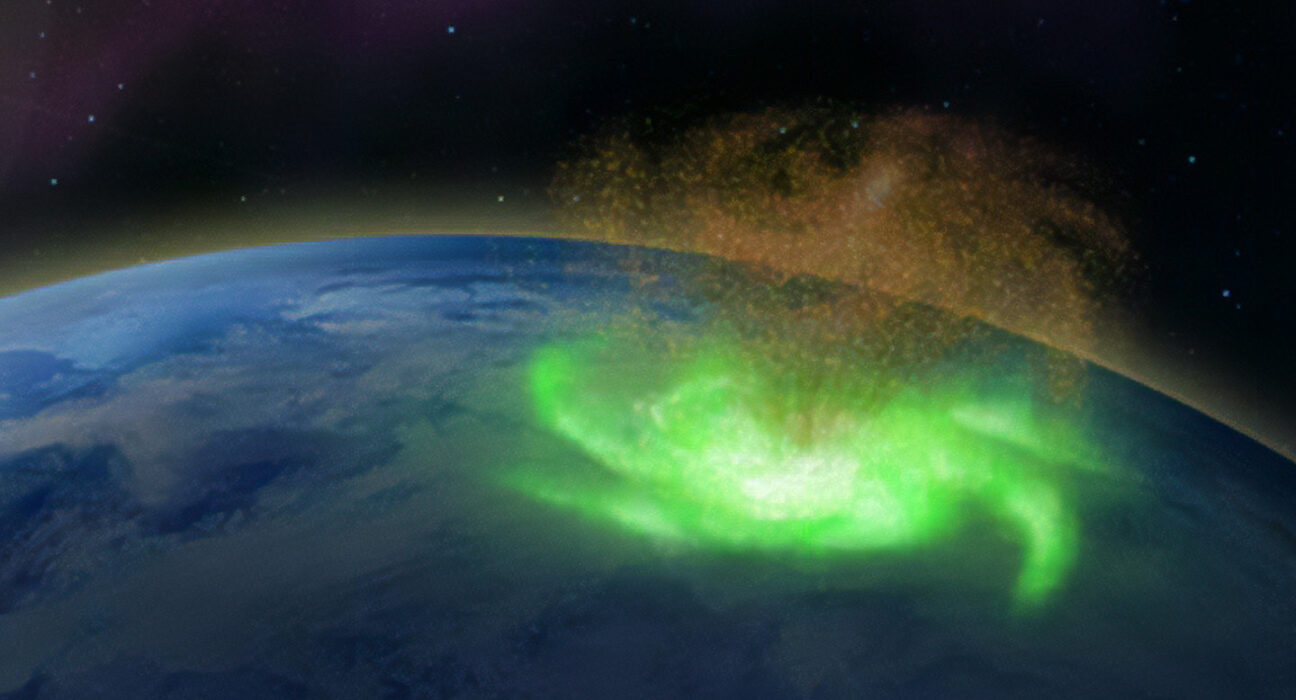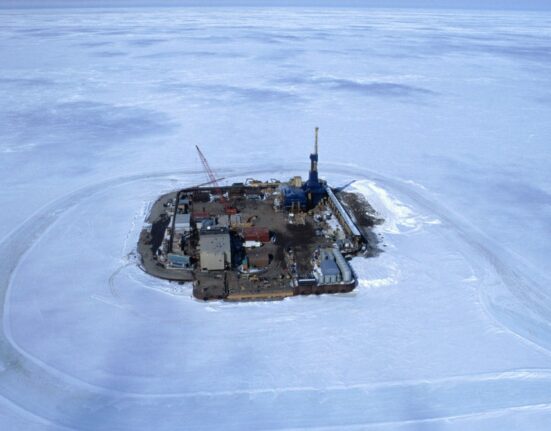atmosphere: The envelope of gases surrounding Earth, another planet or a moon.
aurora: A light display in the sky caused when incoming energetic particles from the sun collide with gas molecules in a planet’s upper atmosphere. The best known of these is Earth’s aurora borealis, or northern lights. On some outer gas planets, like Jupiter and Saturn, the combination of a fast rate of rotation and strong magnetic field leads to high electrical currents in the upper atmosphere, above the planets’ poles. This, too, can cause auroral “light” shows in their upper atmosphere.
average: (in science) A term for the arithmetic mean, which is the sum of a group of numbers that is then divided by the size of the group.
develop: To emerge or to make come into being, either naturally or through human intervention, such as by manufacturing.
electric current: A flow of electric charge — electricity — usually from the movement of negatively charged particles, called electrons.
electron: A negatively charged particle, usually found orbiting the outer regions of an atom; also, the carrier of electricity within solids.
hurricane: A tropical cyclone that occurs in the Atlantic Ocean and has winds of 119 kilometers (74 miles) per hour or greater. When such a storm occurs in the Pacific Ocean, people refer to it as a typhoon.
ionosphere: A layer of Earth’s atmosphere lying around 75 and 1,000 kilometers (47 and 620 miles) above Earth’s surface. It absorbs the sun’s harmful extreme-ultraviolet rays. That energy strips electrons from atoms and molecules, creating a zone full of free-floating ions. The share of ions present, here, affects radio and other signals passing through it.
magnetic field: An area of influence created by certain materials, called magnets, or by the movement of electric charges.
parallel: An adjective that describes two things that are side by side and have the same distance between their parts. In the word “all,” the final two letters are parallel lines. Or two things, events or processes that have much in common, if compared side by side.
particle: A minute amount of something.
physics: The scientific study of the nature and properties of matter and energy. Classical physics is an explanation of the nature and properties of matter and energy that relies on descriptions such as Newton’s laws of motion. Quantum physics, a field of study that emerged later, is a more accurate way of explaining the motions and behavior of matter. A scientist who works in such areas is known as a physicist.
plasma: (in chemistry and physics) A gaseous state of matter in which electrons separate from the atom. A plasma includes both positively and negatively charged particles. (in medicine) The colorless fluid part of blood.
poles: (in Earth science and astronomy) The cold regions of the planet that exist farthest from the equator; the upper and lower ends of the virtual axis around which a celestial object rotates.
radiation: (in physics) One of the three major ways that energy is transferred. (The other two are conduction and convection.) In radiation, electromagnetic waves carry energy from one place to another. Unlike conduction and convection, which need material to help transfer the energy, radiation can transfer energy across empty space.
satellite: A moon orbiting a planet or a vehicle or other manufactured object that orbits some celestial body in space.
solar wind: A flow of charged particles (including atomic nuclei) that have been ejected from the surface of the star, such as our sun. It can permeate the solar system. When emitted by a star other than the sun, this radiation is known as a stellar wind.
tropical cyclone: A strong, rotating storm. These usually form over tropical areas around the equator where the water is warm. Tropical cyclones have strong winds of more than 119 kilometers (74 miles) per hour and usually have heavy rain. Large ones in the Atlantic are known as hurricanes. Those in the Pacific are termed typhoons.













